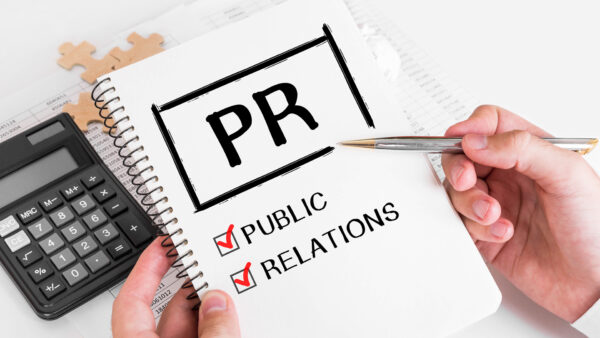Florida Governor Ron DeSantis has said people “have a right to know” how a 12-storey building collapsed within the US city of Miami, because the look for survivors continues.
The number of individuals listed as missing remains at 159, officials say, with four people known to possess died.
At least 102 people have now been accounted for, but it’s uncertain what percentage were inside when it decreased .
Questions are now growing about what caused the building to collapse.
Speaking on Friday, Governor DeSantis said the main target remained on finding survivors.
But he involved a “timely” explanation for what happened, adding they needed to understand “if this is often a much bigger issue, or something unique to the building”.
Fearful relatives hunt news of Miami missing
Miami collapse: What happened? a visible guide
It ‘felt like an earthquake’
In pictures: Rescuers search rubble
Champlain Towers South was completed in 1981. When it collapsed it had been browsing a recertification process for 40-year-old buildings, in line with city safety regulations.
What’s the latest with the search?
Miami-Dade County Mayor Daniella Levine Cava said at a news conference on Friday night she was hopeful they might find survivors overnight.
“We have hope because that is what our search and rescue team tells us, that they need hope,” she told reporters.
Rescuers are working in rotation with a limited number allowed on site at anybody time to stop any longer collapse, she said.
Teams from Mexico and Israel have also reportedly arrived to assist with the search.
As night fell on Friday, the hearth rescue service warned people nearby to remain indoors thanks to the “smoky conditions”.
The BBC isn’t liable for the content of external sites.
View original tweet on Twitter
1px transparent line
President Joe Biden has approved an emergency declaration for Florida, meaning the Federal Emergency Management Agency (Fema) will help state agencies with the relief effort.
What happened to the building?
A large section of the oceanfront Champlain Towers in Surfside crumbled to the bottom at about 01:00 (05:00 GMT) on Thursday.
Resident Barry Cohen was in bed when the building began to collapse. “It seemed like thunder, and my wife and that i , we went out on the balcony; it seemed like a bomb had exploded,” he told the BBC.
“When we opened the door, there was no building there, it had been just a pile of rubble,” he said.
Eyewitnesses described hearing what seemed like thunder before seeing an enormous cloud of dust within the aftermath of the collapse. One compared the scene to the 11 September 2001 attacks on the dual Towers in ny .
Aerial shot of collapsed block
IMAGE COPYRIGHTAFP
image captionA large section of the 12-storey apartment block crumbled early Thursday
People hang signs of missing residents near the location of the Miami building collapse
IMAGE COPYRIGHTREUTERS
image captionPeople have hung images of missing residents near the location of the collapse
The BBC’s Will Grant at the scene says the collapse has left children’s bedrooms visible: “It’s a really disturbing sight.”
Search teams on Thursday night detected sounds of banging and other noises, but no voices coming from the tonnes of debris. Constant rain and storms are further complicating an already difficult task for the search-and-rescue teams.
Authorities have begun taking DNA samples from relatives of these missing just in case only remains of their relations are found within the rubble.
Relatives of the missing have gathered to attend for news. they need been putting out appeals on social media for information that would help them find their loved ones.
2px presentational grey line
Families anxiously await news
BBC’s Will Grant in Miami
In the cool of the first evening, a couple of families and neighbours appeared on the beach nearest to the collapsed building to light candles and lay flowers. Others stood in mute reflection because the full gravity of what happened during this small seaside community is now becoming clear.
It was a pointy contrast to the activity at the location all day where search and rescue teams have maintained their momentum despite torrential downpours and other setbacks. For long periods, thick acrid smoke billowed from the collapsed building as sporadic fires broke call at the wreckage.
And through it all, the teams have kept checking out survivors.
Most families are hanging on to the hope that there are still people inside the debris which their missing beloved might, somehow, be pulled out alive soon. Yet many are cognizant the probabilities of such an outcome are becoming slimmer by the hour.
The family reunification centre has been moved from a community centre near the destroyed building to a hotel slightly further away. But the scene is far the same: relatives sit – anxious and tearful, holding hands, desperate for a positive update.
So far, none has been forthcoming.
2px presentational grey line
Miami map
1px transparent line
What caused the collapse?
It remains unknown. A full investigation will begin after the rescue mission.
As the building has stood since 1980, it had been due its standard 40-year review. The building was undergoing its “recertification” process and required repairs, officials said.
Kenneth Direktor, a lawyer involved within the work, was quoted within the ny Times saying engineers had identified rusted steel and damaged concrete that needed repairing, but added that he saw nothing to suggest the collapse had anything to try to to thereupon review.
Graphic showing images of the building before and after it collapsed
A study from researchers at Florida International University published last year found that the building had been sinking at a rate of two millimetres per annum within the 1990s, which can have affected the building structurally.
But the author has cautioned that the study was just a snapshot in time. The building was constructed on reclaimed wetland, which experts say is usually of concern because the land underneath can compact over time, resulting in shifts.
On the sinking, the author of the study, Prof Shimon Wdowinski, told the Miami Herald newspaper: “We’ve seen much above that, but it stood out because most of the world was stable and showed no subsidence.”
Prof Wdowinski said the research isn’t meant to suggest certainty about the newest incident.













